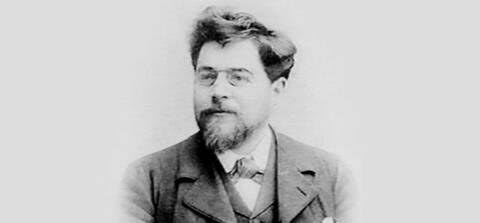1927년 4월 15일, ‘오페라의 유령’의 원작자•프랑스 작가 ‘가스통 르루’ (Gaston Louis Alfred Leroux, 1868 ~ 1927) 별세
가스통 루이 알프레드 르루 (Gaston Louis Alfred Leroux, 1868년 5월 6일 ~ 1927년 4월 15일)는 프랑스의 저널리스트이자 추리 소설 작가이다. 대표작으로 ‘오페라의 유령’이 있다.
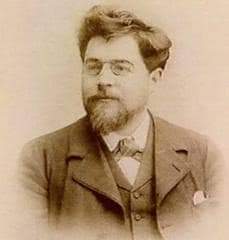
– 가스통 르루 (Gaston Louis Alfred Leroux)
.출생: 1868년 5월 6일, 프랑스 파리
.사망: 1927년 4월 15일 (58세), 프랑스 니스
.배우자: 잔느 카야트 (1917 ~ 1927), 마리 르프랑
.자녀: Madeleine Aile, 알프레드 가스통 르루
.작품: 노란 방의 비밀, 검은 옷의 부인의 내음, 오페라의 유령 등
가스통 르루 (Gaston Louis Alfred Leroux, 1868년 ~ 1927년)는 프랑스 언론인이자 탐정 소설의 작가이다.
영어권 세계에서 그는 오페라의 유령 (프: Le Fantome de l’Opera, 1910)을 저술 한 것으로 가장 잘 알려져 있으며, 특히 론 샤니 (Lon Chaney)가 출연 한 1925 년 영화와 앤드류 로이드 웨버 (Andrew Lloyd Webber)의 1986 년 뮤지컬과 같은 이름의 여러 영화 및 무대 제작으로 제작되었다.
그의 1907 년 소설 The Mystery of the Yellow Room은 가장 유명한 잠긴 방 신비 중 하나다.
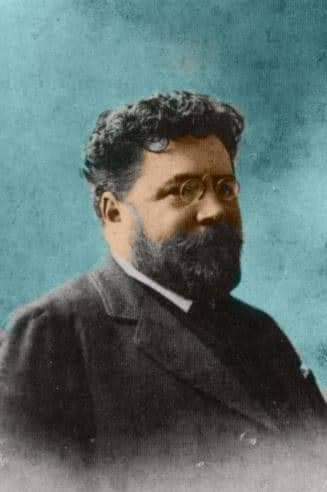
○ 생애 및 활동
가스통 르루 (Gaston Louis Alfred Leroux)는 1868년 5월 6일, 파리 출생의 프랑스 추리소설가로 중등교육을 마치고 법률가를 지망하였으나, 파리의 신문 기고가가 되었다.
추리소설에서 미국의 에드거 앨런 포, 영국의 아서 코난 도일에 비견되는 프랑스 작가로는 가스통 르루가 꼽힌다.
그림 신문 《일뤼스트라시옹》의 권유를 받아 연재한 장편 《노란 방의 비밀》이 그의 대표작이며, 《검은 옷의 부인의 내음》, 루르타비유를 주인공으로 하는 시리즈, 괴인 (怪人) 셰리 비비를 주인공으로 하는 시리즈 등이 있다.
젊은 시절 신문기자로 활동했던 그는 전업 작가가 된 이후 과거에 취재했던 것들을 소설의 소재로 많이 활용하였으며, 그를 불멸의 지위에 오르게 만든 것은 프랑스 신문 「르 골루아」에 연재했던 『오페라의 유령』일 것이다.
『오페라의 유령』은 파리오페라극장 취재에서 모티브를 얻었다.
‘오페라의 유령’은 파리 오페라 하우스 지하에 사는 에릭이라는 흉측하고 은둔적인 남자가 재능 있는 젊은 가수 크리스틴 다에와 사랑에 빠지는 이야기를 담고 있다. 이 소설은 사랑, 집착, 그리고 오페라 하우스의 신비롭고 으스스한 분위기를 주제로 탐구합니다. 로맨스, 고딕 호러, 미스터리 요소가 혼합되어 있다.
Leroux는 조사 저널리즘과 범죄 및 재판에 대한 보도로도 유명했는데, 이는 그의 글쓰기 스타일과 소설 주제 선택에 영향을 미쳤다. 그의 다른 주목할 만한 작품으로는 가상의 탐정 Joseph Rouletabille이 등장하는 탐정 소설 “노란색 방의 미스터리”(프: “Le Mystère de la Chambre Jaune”)와 “검은 옷을 입은 여인의 향수”가 있다.
가스통 르루의 글은 미스터리와 서스펜스 문학의 세계에 지속적인 유산을 남겼으며, 그의 작품은 계속해서 독자들에게 높이 평가되며 다양한 형태의 미디어에 활용되었다.
작품으로는 『오페라의 유령』, 『노란 방의 비밀』, 『감자튀김 장수』, 『보물 추적자』, 『하얀 러시아의 단말마』 등이 있다.
1902년 1월, 가스통은 탁월한 편집 능력과 여러 신문사의 기자로서 뛰어난 공로를 인정받아 레지옹 도뇌르 훈장을 받는다.
가스통 르루는 예민한 통찰력과 번뜩이는 머리를 최고의 무기로 갖고 있는 탐정과 기자인 셰리-비비(Cheri-Bibi)와 룰르타비유(Rouletabille)라는 인물을 만들어낸 장본인이기도 하다.
추리소설과 판타지소설의 경계에 서 있는 가스통 루르는 1927년 4월 15일, 프랑스 니스에서 별세했다. 향년 58세
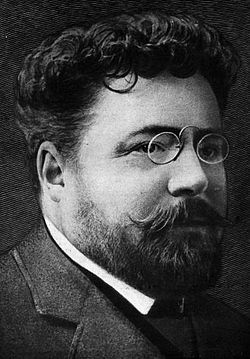
○ 대표작 ‘오페라의 유령’
가스통 르루는 1910년 오페라 극장 (가르니에 궁)을 방문하여 불가사의한 소문을 듣고 《오페라의 유령》을 집필했다.
이 작품은 높은 판매고를 올렸고, 영국과 미국의 신문에도 연재되었다.
1922년, 유니버설 영화 사장 카를 렘리는 오페라 극장의 건축에 감명을 받아 르루에게서 《오페라의 유령》을 선물받았다.
렘리는 뛰어난 연기력을 가진 배우 론 채니의 《노트르담의 꼽추》 다음 출연작으로 이 작품을 영화화하기로 결정했다.
1925년에 영화가 공개되어 큰 성공을 거두었고, 이후 여러 번 영화화되었다.
1986년에는 앤드류 로이드 웨버가 이 작품을 뮤지컬로 만들어 뮤지컬 역사상 최대 히트작이 되었다.
○ 영화 제작 참여
1919년, 르루는 아르튀르 베르네드와 함께 자신의 영화 제작사인 소시에테 데 시네로망을 설립하여 소설을 출판하고 영화로 제작했다.
그의 소설 ‘발라오’는 1913년, 1927년, 1942년 등 여러 차례 영화로 제작되었다.
○ 한국내 출간작
.오페라의 유령 : 가장 많이 출판되고 가장 인기있는 작품.
.노란 방의 비밀 : 르루의 소설 중 한국내에 가장 일찍 소개된 작품.
.귀신들린 의석 : 한국 출간 제목은 <아카데미의 유령>으로, 역시 오페라의 유령의 덕을 보려는 듯한 괴한 제목이다.
.밀랍인형 : 단편집으로 추리물과 공포물이 같이 수록되어 있다.
수록작은 금도끼/흉상들의 만찬/비로드 목걸이를 한 여자/어린 반산 반산의 크리스마스/노트람프/공포의 산장/불의 문자/밀랍인형.
참고로 일본의 창원문고에서 나온 가스통 르루 공포 야화와 일치하는 구성이다.
.제물포의 영웅들: 국내판 제목 <러일전쟁, 제물포의 영웅들>.
소설이 아니라 르포 제물포 해전에 대해 다루고 있다.
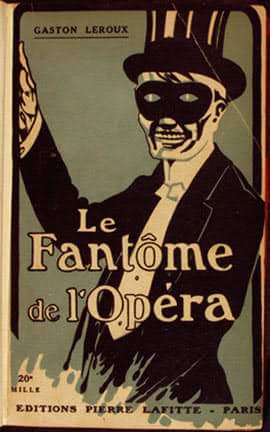
○ 작품
가스통 르루는 추리 소설, 모험 소설, 괴기 소설 등 다양한 장르의 작품을 남겼다.
주요 작품으로는 『오페라의 유령』, 『노란 방의 비밀』, 『감자튀김 장수』, 『보물 추적자』, 『하얀 러시아의 단말마』 등이 있다.
* Novels
– The Adventures of Rouletabille
1907 – Le mystère de la chambre jaune (English translation: The Mystery of the Yellow Room, 1907; Rouletabille and The Mystery of the Yellow Room, 2009, translated by Jean-Marc Lofficier & Randy Lofficier)
1908 – Le parfum de la dame en noir (English translation: The Perfume of the Lady in Black, 1908)
1913 – Rouletabille chez le Tsar (Rouletabille and the Tsar; English translation: The Secret of the Night, 1914)
1914 – Rouletabille à la guerre (Rouletabille at War) consisting of
Le château noir (The Black Castle)
Les étranges noces de Rouletabille (The Strange Wedding of Rouletabille;)
1917 – Rouletabille chez Krupp (English translation: Rouletabille at Krupp’s, 2013, by Brian Stableford)
1921 – Le crime de Rouletabille (The Crime of Rouletabille; English translation: The Slave Bangle, 1925; The Phantom Clue, 1926, translated by Hannaford Bennett)
1922 – Rouletabille chez les Bohémiens (Rouletabille and the Gypsies; English translation: The Sleuth Hound [UK], 1926; The Octopus of Paris [US], 1927, translated by Hannaford Bennett)
– Chéri Bibi
Première Aventures de Chéri-Bibi (1913, English translations: The Floating Prison [UK] and Wolves of the Sea [US], Translated by Hannaford Bennett in 1923)
Chéri-Bibi et Cécily (1916, English translations: Missing Men: The Return of Cheri-Bibi [US], Cheri-Bibi and Cecily [UK], 1923, translated by Hannaford Bennett)
Nouvelles Aventures de Chéri-Bibi (1921, English translations: Part I – The Dark Road, 1924; Part II – The Dancing Girl [UK], Nomads of the Night [US], Translated by Hannaford Bennett 1925)
Le Coup d’État de Chéri-Bibi (1926, English translation: The New Idol, Translated by Hannaford Bennett 1928)
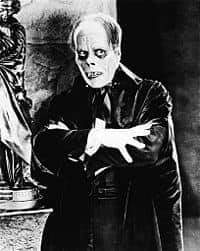
– Other novels
Poster of the film adaptation of Balaoo in 1913
La double vie de Théophraste Longuet (1903, English translations: The Double Life, 1909, translated by John E. Kearney; The Man with the Black Feather, 1912, translated by Edgar Jepson)
Le roi mystère (1908)
Le fauteuil hanté (1909, English translation: The Haunted Chair, 1931)
Un homme dans la nuit (1910)
La reine de Sabbat (1910, English translations: Part I as The Midnight Lady [UK], 1930; Part II as The Missing Archduke [UK], 1931)
Le fantôme de l’Opéra (1910, English translation: The Phantom of the Opera, 1911)
Balaoo (1911, English translation: Balaoo, 1913)
L’ épouse du soleil (1912, English translation: The Bride of the Sun, 1915)
La colonne infernale (1916)
Confitou (1916)
L’ homme qui revient de loin (1916, English translation: The Man who Came Back from the Dead, 1916)
Le capitaine Hyx (1917, English translation: The Amazing Adventures of Carolus Herbert, 1922, translated by Hannaford Bennett)
La bataille invisible (1917, English translation: The Veiled Prisoner [UK], 1923, translated by Hannaford Bennett)
Tue-la-mort (1920, English translation: The Masked Man, 1929)
Le coeur cambriolé (1920, English translation: The Burgled Heart, 1925; The New Terror, 1926)
Le sept de trèfle (1921)
La poupée sanglante (1923, English translations: The Kiss That Killed, 1934, translated by Hannaford Bennett)
La machine à assassiner (1923, English translation: The Machine to Kill, 1934)
Les ténébreuses: La fin d’un monde & du sang sur la Néva (1924)
Hardis-Gras ou le fils des trois pères (1924, English translation: The Son of 3 Fathers, 1927, translated by Hannaford Bennett)
La Farouche Aventure (serialized in “Le Journal” as La Coquette punie, 1924; English translation: The Adventures of a Coquette, 1926, translated by Hannaford Bennett)
La Mansarde en or (1925)
Les Mohicans de Babel (1926)
Mister Flow (1927, English translation: Part I as The Man of a Hundred Faces [USA] and The Queen of Crime [UK], 1930; Part II as Lady Helena, or The Mysterious Lady [USA], 1931)
Les Chasseurs de danses (1927)
Pouloulou (1990, posthumous)
– Short stories
1887 – “Le petit marchand de pommes de terre frites”
1902 – “Les trois souhaits”
1907 – “Baïouchki baïou”
1908 – “L’homme qui a vu le diable” (English translation: “In Letters of Fire”, 1908)
1911 – “Le dîner des bustes” (English translation: “A Terrible Tale”, 1925)
1912 – “La hache d’or” (English translation: “The Gold Axe”, 1925)
1924 – “Le Noël du petit Vincent-Vincent” (English translation: “The Crime on Christmas Night”, 1930)
1924 – “La femme au collier de velours” (English translation: “The Woman with the Velvet Collar”, first English publication in Weird Tales, October 1929)
1924 – “Not’olympe” (English translation: “The Mystery of the Four Husbands”, first English publication in Weird Tales, December 1929)
1925 – “L’Auberge épouvantable” (English translation: “The Inn of Terror”, first English publication In Weird Tales, August 1929, Translated by Mildred Gleason prochet)
– Plays
1908 – Le Lys (co-author: Pierre Wolff)
1913 – Alsace (co-author: Lucien Camille)
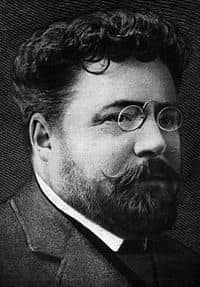
* Filmography
Films based on The Phantom of the Opera
Films based on the Rouletabille novels
Balaoo [it], directed by Victorin-Hippolyte Jasset (1913, short film, based on the novel Balaoo)
Chéri-Bibi, directed by Charles Krauss [it] (1914, short film, based on the novel Chéri-Bibi)
Alsace, directed by Henri Pouctal (1916, based on the play Alsace)
L’Homme qui revient de loin, directed by Gaston Ravel (1917, based on the novel L’Homme qui revient de loin)
La Nouvelle aurore, directed by Édouard-Émile Violet [fr] (1919, serial with 16 episodes, based on the novel Nouvelles aventures de Chéri-Bibi)
A halál után, directed by Alfréd Deésy (Hungary, 1920, based on the novel L’Homme qui revient de loin)
The Lily, directed by Victor Schertzinger (1926, based on the play Le Lys)
The Wizard, directed by Richard Rosson (1927, based on the novel Balaoo)
The Phantom of Paris, directed by John S. Robertson (1931, based on the novel Chéri-Bibi et Cécily)
Cheri-Bibi, directed by Carlos F. Borcosque (1931), alternative Spanish-language version of The Phantom of Paris
Compliments of Mister Flow, directed by Robert Siodmak (1936, based on the novel Mister Flow)
Chéri-Bibi [fr], directed by Léon Mathot (1938, based on the novel Chéri-Bibi)
Dr. Renault’s Secret, directed by Harry Lachman (1942, based on the novel Balaoo), uncredited
The Man Who Returns from Afar, directed by Jean Castanier [fr] (1950, based on the novel L’Homme qui revient de loin)
Chéri-Bibi, directed by Marcello Pagliero (1955, based on the novel Chéri-Bibi)
La Poupée sanglante, directed by Marcel Cravenne (1976, miniseries, based on the novel La poupée sanglante and its sequel, La machine à assassiner)
– Screenwriter
Tue la mort [fr], directed by René Navarre (1920, serial with 12 episodes)
Le Sept de trèfle [fr], directed by René Navarre (1921, serial with 12 episodes)
Il était deux petits enfants, directed by Lino Manzoni (1922)

참고 = 위키백과, 교보문고
크리스천라이프 편집부

